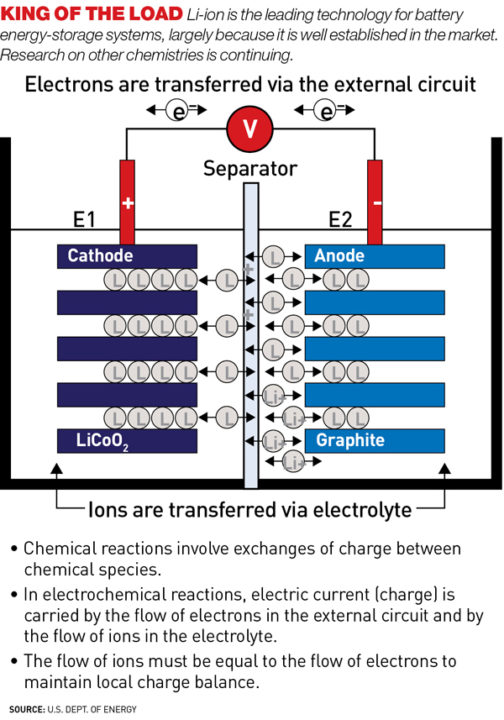While echoing these conclusions, the International Energy Agency cautions that regulatory regimes and market conditions "are frequently ill-equipped to compensate storage for the suite of services that it can provide" and that "some technologies are still too expensive relative to other competing technologies," such as flexible generation and new transmission lines.
 |
| ROBERTS |
Incentives take various forms. PJM's program is pay for performance. "Assets or devices that are deployed on the grid that are able to provide ancillary services faster and better than current technologies can get triple payment compared to their non-fast-responding competitors," Roberts says. PJM will pay triple for each megawatt delivered, compared to a coal powerplant providing the same service.
Energy storage is so often associated with renewables that some people may be surprised to find a storage project being constructed on the site of a fossil-fueled powerplant, but ancillary services are needed throughout the grid. Duke Energy is building a 2-MW, 0.8-MWh Li-ion battery energy-storage system as a pilot at its W.C. Beckjord Station in New Richmond, Ohio. Beckjord's four oil-fired combustion turbines, with combined capacity of 244 MW, serve peak demand. When the storage pilot is completed by the end of this year, it will regulate frequency on the PJM.
 |
| SHELTON |
The Internet-Model Grid
Shelton sees in this digitally triggered response the potential for a very different future electrical system. People are realizing that having some autonomous capability on the grid may actually make sense, he says. If each node on the grid is a resource—rooftop solar, storage, demand response—"that points to a grid that looks more like the internet 15 years from now than what we have [today]," he says.
The internet's nodes follow general, standardized rules, resulting in "an incredibly resilient system. It's hard to even conceive of how you could take it down," Shelton says. "Each end point of that network was designed with redundancy, resiliency [and] reliability in mind at the beginning. I think we're approaching an era in electricity when we'll be able to make that vision a reality."
A grid composed of standardized nodes that communicate using the same protocols would be highly flexible. "We won't have to study an issue [for] two years to determine whether we can connect a 10-MW solar facility because that solar facility follows certain standards of autonomy and control. We should be able to just connect it," Shelton adds.
California may have the nation's first mandate, but other jurisdictions also are promoting energy storage— some with carrots, others with sticks. "There are a number of programs that provide incentives and mandates for resilience," says Matt Roberts, executive director of the Energy Storage Association. "In New Jersey, they want increased reliability on the grid, so they've got a program that incentivizes devices and hardware that can solve these problems."AES Energy Storage, Arlington, Va., has built two energy-storage projects, in Ohio and in West Virginia, that jointly provide one-sixth of the PJM mid-Atlantic region's frequency regulation service. The company also has built a coal-fired powerplant in Chile that several sources call "pioneering" in the use of energy storage. The battery and powerplant operate as a unit, but the battery gets dispatched separately, explains Chris Shelton, AES Energy Storage president. The battery "listens to what's happening on the grid and automatically responds to provide stability."












